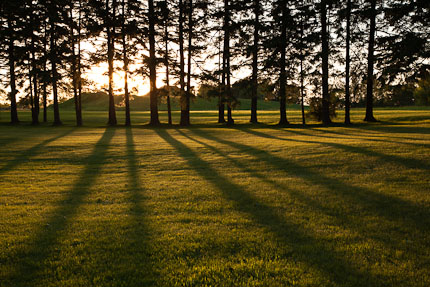For those new to the digital world, we have some beginner tips on live view, understanding your histogram, and resizing photos. For those interested in post-processing their images, we have some more advanced tips on taking digital photography. We explain a simple digital photo workflow, including monitor calibration, and photo sharpening.
Contents:
Beginner
|
Advanced
|
Not what you were looking for? Try our page on basic digital photography, where we explain noise, DPI, megapixels, sensors, and more, as well as comparing DSLRs to compact point and shoots. You also get a chance to peek inside my camera bag and see reviews of all my gear.
Don’t Get Bogged Down by the Technology
When you start out in digital photography, it can seem a bit overwhelming. You need to learn a new camera, and what all the buttons and menus are for. Next, you need to learn some technology to get your images onto a computer so that you can share them and print them. If you decide to take things further and polish and process your pictures, then you also need to learn complicated software. Histograms, calibration, color spaces, resolution, live view… Phew! What does it all mean, and how much do you need to know?
Don’t panic. Breathe! It’s certainly possible, and quite acceptable, to learn things one step at a time. You certainly don’t need to know everything before you can get started (or none of us would ever start!). There’s no denying that it’s important for you to be familiar with your camera, and understand the basics of digital photography. It will certainly improve your pictures to have a grasp on what’s going on behind the scenes, because it can help you choose sensible settings to get the results you want. In addition, the more familiar you are with your camera gear, the less you have to think about it while you’re shooting. That allows you to concentrate on the important parts: having fun and being creative. But please don’t get too bogged down by all the technology. Read and learn all tips for taking digital photography that you can, but make sure you remember that your most important tool is the one between your ears. First and foremost, enjoy yourself.
Beginner Tips for Taking Digital Photography
These tips for taking digital photography are intended for anyone who is starting out. Whether you are brand new to photography in general, or just brand new to the digital world, these articles should help get you started.
The first of our digital photo tips explains what Live View is and how you can use it to achieve more accurate focus of stationary subjects. For point and shoot, or compact digital cameras, using the live view screen on the back of the camera is actually the norm. DSLRs work a little differently, and you typically look through the viewfinder instead.
Do you use the histogram that your camera can display for each image? The histogram is one of the most important tools you have available to you to help you get a good exposure. I’ve collected a few pages of information on histograms, since they are so important. What is a Histogram? Learn how to take full advantage of the information provided to you by your digital photography histogram. See some histogram examples that show a photo and corresponding histogram together to clarify your understanding.
After you’ve captured your image, you may want to post it on the web or email it to a friend, or even submit it to a contest. That often involves resizing the image. Some of the questions I get asked the most frequently are around resizing photos. How is image size related to resolution and to file size? How do you resize an image to print or email? In this in-depth article, I unravel the confusion around resizing photos.
No photo is truly complete until it’s in printed form. These days it’s easy to create professional looking digital photo books to show off your work. Read our tips to help you create books that will “wow!”

© Julie Waterhouse Photography
Advanced Tips for Taking Digital Photography
These tips are intended for people who are post-processing their images.
If you are going to process your images on the computer after you’ve taken them, you really must be shooting in RAW format, rather than in JPEG. To understand why, read more about RAW vs JPEG.
Calibrate Monitor: Get this “todo” on your list! Understand why you might be wasting your time with photo editing if you don’t complete this critical process. Learn what monitor calibration is, how (and how often) to do it, and why!
Learn about post-processing in the digital darkroom. Here’s a very simple digital photo workflow for processing your images. It will cover everything from camera settings, to organizing your files, to correcting your images, to converting your files from RAW, to printing.
Learn what photo sharpening is, and different methods to accomplish it. We cover the unsharp mask, high pass sharpening, and photo sharpening software. Understand when and why to apply sharpening.

© Julie Waterhouse Photography
Hope you enjoyed those tips for taking digital photography!
Next, you may want to visit our collection of video tips on digital photography technique: “Two Minute Photo Tips.”